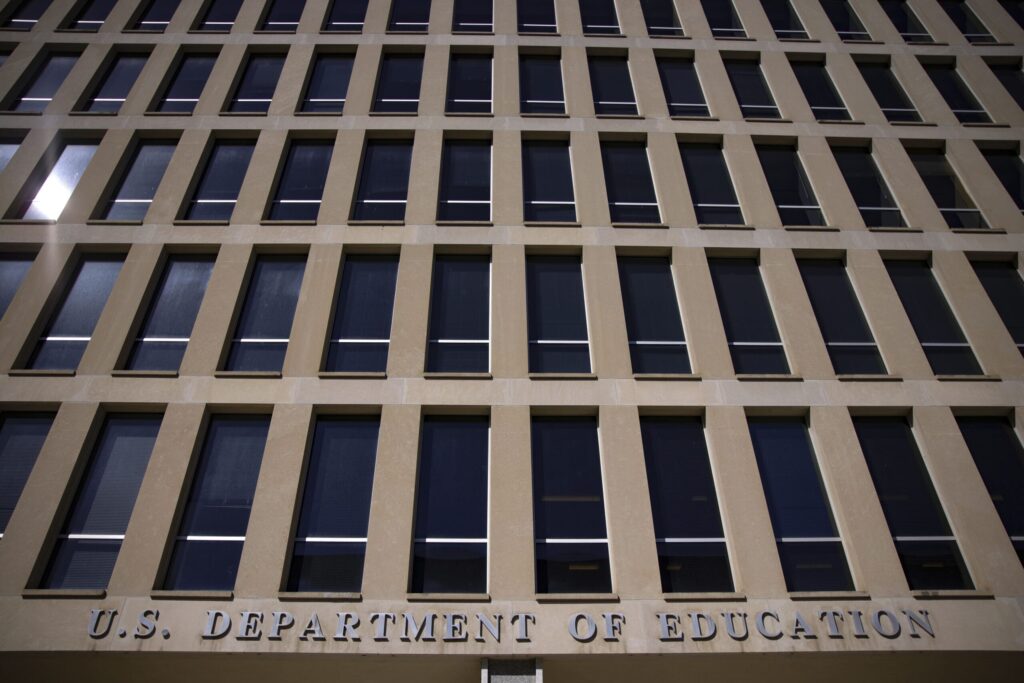Article Summary –
The Trump administration sought the Supreme Court’s intervention to overturn a federal appeals court decision that blocked its efforts to dismantle the Department of Education, a move aligned with Project 2025’s agenda, which advocates for eliminating the department. The administration had previously implemented drastic measures, including cutting staff and freezing funds for educational programs like Head Start, despite legal challenges and injunctions. While Congress would need to pass legislation to officially dissolve the Department of Education, it is unlikely to garner sufficient Senate support to bypass a Democratic filibuster.
President Donald Trump’s administration has approached the Supreme Court to halt a federal appeals court decision stopping it from dissolving the Department of Education.
In a motion filed on June 6, U.S. Solicitor General D. John Sauer claimed the ruling would “irreparably harm” the federal government, forcing it to rehire laid-off Department of Education staff.
The administration has aimed to eliminate the four-decade-old federal department since its inception. Ending the Department of Education aligns with Project 2025, a right-wing plan developed by the Heritage Foundation for a potential second Trump administration.
On March 11, the Trump administration implemented a “reduction in force” at the Department of Education, slashing employees by half. On March 20, Education Secretary Linda McMahon was instructed to “take all necessary steps to facilitate closure” of the department.
Trump stated in an executive order, “Closing the Department of Education would provide children and their families the chance to escape a failing system. The Federal education bureaucracy is not working.”
In May, a federal judge issued a preliminary injunction blocking the administration’s actions, requiring the reinstatement of laid-off employees.
On June 4, a U.S. Court of Appeals for the 1st Circuit panel upheld this ruling.
Judge David Barron wrote in the panel’s ruling that the case involved whether a nearly 50-year-old department could perform its duties amidst mass employee terminations aimed at closure. “Given the District Court’s findings and lack of opposing evidence, we conclude appellants’ stay motion doesn’t justify interfering with appellate adjudication,” Barron stated.
The district court order demanded the Trump administration reinstate all employees terminated on or after Jan. 20, file regular status reports, and avoid reinstating directives “under a different name.”
The ruling is not final, preventing the administration from dismantling the Department of Education while the case proceeds in court.
The Trump administration cannot legally end the Department of Education alone. Congress must pass a bill dissolving it, and Republicans are unlikely to secure the 60 Senate votes needed to overcome a Democratic filibuster without rule changes.
Experts say Trump’s actions align with Project 2025: The 922-page Project 2025’s education chapter starts by advocating the Department’s elimination.
Other Trump actions hindering the Department’s effectiveness include freezing teacher-training grants and proposing a $12 billion cut in its 2026 budget for programs aiding low-income students, teacher training, and more.
The Trump White House has used the Department against perceived political enemies, threatening Columbia University’s accreditation and withholding grants from Harvard over grievances, including hiring “failed Mayors Bill De Blasio and Lori Lightfoot” for teaching.
McMahon informed Harvard it should no longer seek federal GRANTS as none will be provided.
Republicans in Congress have integrated another Project 2025 priority: school vouchers. A House-passed reconciliation bill includes a measure to legalize nationwide school vouchers, costing $20 billion over four years.
The administration also seeks to end Head Start, the federal child care and preschool program, another Project 2025 priority.
In January, the White House froze federal funding for Head Start, sparking outrage among providers.
After 23 state attorneys general sued, the administration rescinded the freeze but continued withholding funding. A Rhode Island federal judge granted a temporary restraining order blocking the freeze, upheld by the U.S. Court of Appeals for the 1st Circuit on Feb. 11.
Nonetheless, the administration slashed federal Head Start staff and closed regional offices, complicating local funding access.
USA Today reported in April that eliminating Head Start funding was considered for the 2026 budget proposal, but by May 2, the released proposal included no such cuts. The Associated Press reported an official stated there would be “no changes” to Head Start funding.
—
Read More Michigan News










